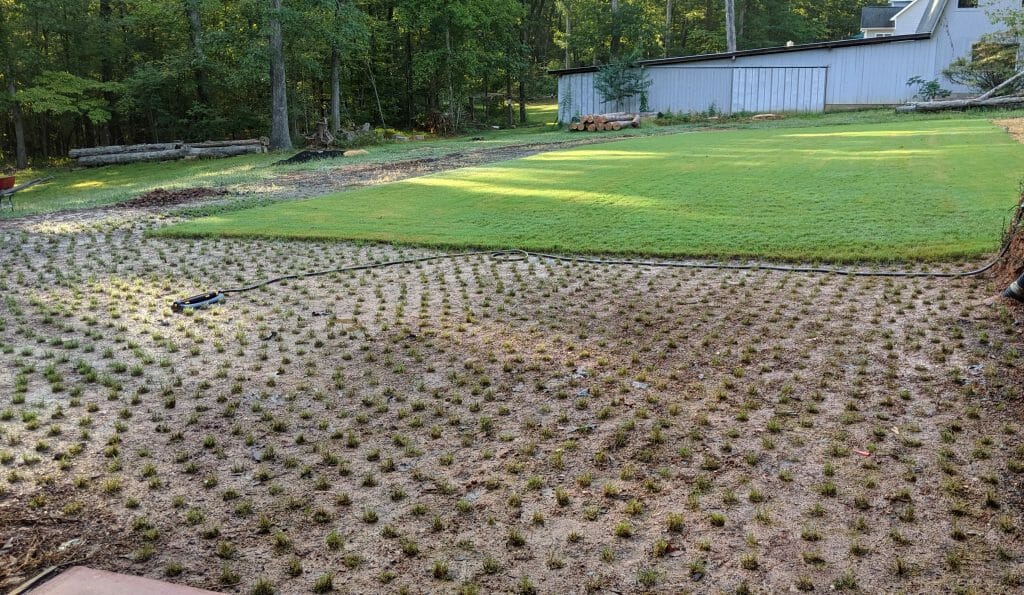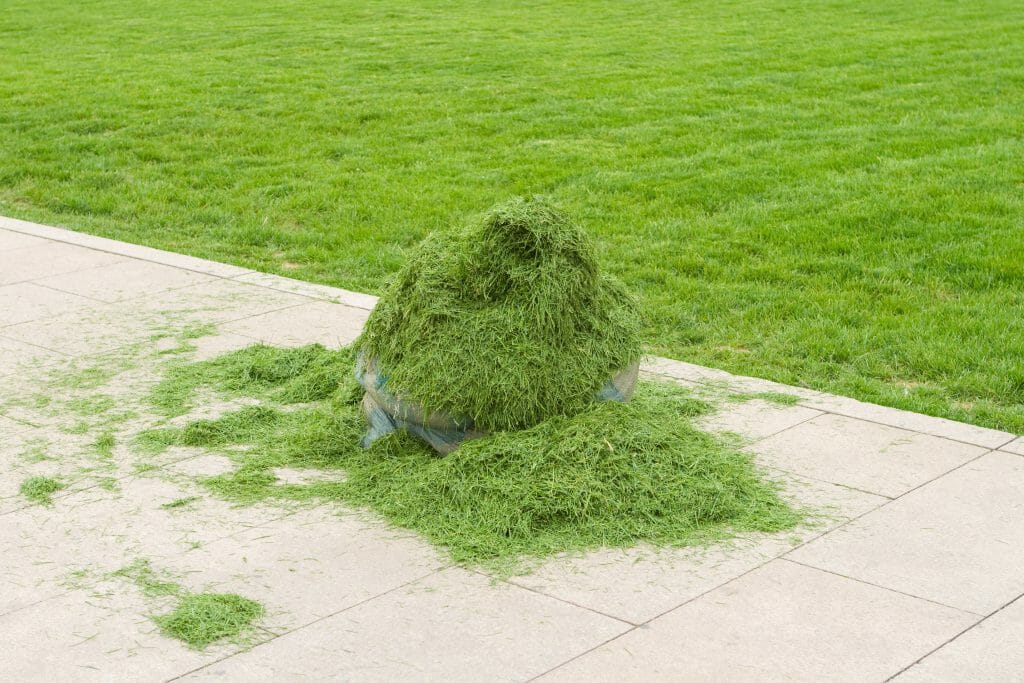So, you’ve established a new lawn and you want to know how to make your St Augustine grass spread quickly to give you a lush, thick lawn. Because of its dense growth, this grass variety has a natural propensity to spread relatively quickly. But there are things you can do to help it along. Let’s discuss these in more detail.
Firstly, What Is St Augustine Grass?
St Augustine is a tough, thick, carpet-like grass which grows profusely in warm climates. Its scientific name is Stenotaphrum secundatum. Gardeners in Australia and South Africa know it as buffalo grass.
The individual blades of grass are broad and flat and it spreads by putting out runners above the ground. This allows the lawn to produce a nice dense layer which can handle a lot of traffic. Its ideal climate preference is semi-tropical to tropical.
Typically, you would plant a St Augustine lawn using plugs or sods. And, this is why many people ask how to make it spread quickly.
Types Of St Augustine Grass
There are a number of different cultivars of this grass species. Here is a list of the most common ones:
- Captiva – This was developed by the University of Florida and released in 2007. It has a dwarf profile and is resistant to the southern chinch bug.
- Floratine – An older variety which was released in 1959. It has a finer texture and is darker in color. This cultivar requires less mowing and will tolerate lower temperatures.
- Floratam – A cultivar that was released in 1973 as the result of a collaboration between the Texas A&M University and the University of Florida. This variety is not as shade or cold-tolerant as other cultivars. It does, however, have a resistance to the viral infection of St Augustine decline.
- Palmetto – This is a lighter green grass with a smaller growth habit and was released in the mid-1990s.
- Raleigh – A cold-tolerant cultivar which was released in 1980. However, it is more susceptible to disease and insect attack.
- Seville – This is similar to Floratam and was released in 1980. It has a finer texture.
- Sapphire – An Australian cultivar which was released in 2004. It has dark blue-green leaves and purple runners. Its other benefit is that it produces rapid lateral growth.
- Sir Walter – Another Australian cultivar which was released in 1996. It’s ideal for hot and dry conditions due to its drought tolerance.
- Texas Common – This cultivar very closely resembles the natural species. It is not grown widely now, however, because it’s susceptible to the SAD virus which is incurable.
- Variegatum – An interesting cultivar which was given the Award of Garden Merit by the Royal Horticulture Society in 1993. What makes it quite different is that is has striped white blades, hence its name.
5 Tips To Make St Augustine Grass Spread Faster
Because a lawn of St Augustine grass is laid with plugs or sods, you have to wait for these to spread to fill the entire area. Here are some things you can do to help create a lush, thick lawn faster.
1. Make Sure Your Soil Is Prepared Correctly
St Augustine prefers a well-drained sandy soil with a pH level of around 5.0 to 8.5. Therefore, make sure your soil is free draining and doesn’t contain too much clay. For this lawn variety, it’s best not to incorporate too much compost into the soil.
For bare patches that you want to cover quickly, try top-dressing with sand only. This will encourage the runners to spread faster.
2. Use A Fertilizer High In Phosphorus
Phosphorus will help to stimulate quick root growth. Therefore, this is essential for encouraging your grass to spread. Try to use a fertilizer high in this mineral until your grass has the desired spread.
Once the grass has covered all the bare patches of ground, you can revert to using a more balanced fertilizer to continue to encourage healthy, green growth.
3. Make Sure You Plant Your Lawn In Summer
Because St Augustine is a warm-season grass, it’s important to plant your new lawn in summer. This will ensure you give it the most optimum growing conditions to allow it to spread quickly.
But remember to water it regularly, especially in hot, dry weather. You may have to do this several times a day after you first plant your plugs or sods. Especially, in the first week.
Once your lawn is well established, it won’t require as much watering. It will be dormant over winter, so the maintenance can be reduced during this time.
4. Remove Any Weeds As Soon As You See Them
Weeds will compete with your grass for both water and nutrients, so remove them quickly. You can either pull them by hand or use a good broad leaf herbicide which won’t damage your grass.
Too many weeds will hinder the spread of your grass, so it’s important to remove them as soon as you see them.
5. Ensure You Use Good Mowing Practices
When mowing your lawn, make sure your mower blades are sharp and that you don’t remove more than one third of the grass height. It’s also a good idea to remove your grass catcher and leave the clippings on the lawn. They will slowly break down to feed your grass as it grows.
Frequently Asked Questions:
What is the optimum St Augustine grass mowing height?
A good rule of thumb is to never remove more than one third of the height of the grass. Generally, St Augustine prefers a mowing height of 3.5 to 4 inches.
How long do St Augustine plugs take to spread?
The plugs will start to spread once their roots are firmly established. This could take around 7 to 14 days.
How often should you water St Augustine grass in the summer?
Because it’s actively growing in the warm weather, St Augustine should be watered well at least once a week after it is fully established. If the weather is particularly hot and dry, you may want to water every 4 to 5 days.
What Causes St Augustine grass to turn yellow?
If your St Augustine lawn is showing signs of yellowing, it could be due to a number of reasons. Primarily, if you’ve had a lot of rain, this could be leaching nitrogen out of the soil. Nitrogen is responsible for vigorous green growth.
Your grass could also be suffering from an iron deficiency. To fix this problem, apply a nitrogen rich fertilizer which also contains a good amount of iron.
Final Thoughts
We hope you found these tips on how to make St Augustine grass spread quickly useful. Before planting your new lawn, remember to prepare your soil well and fix any drainage problem.
Plant your new lawn in summer to encourage vigorous growth and ensure regular watering in the first few weeks. Follow a good maintenance schedule and you’ll have a lush, thick lawn to enjoy all summer long.






